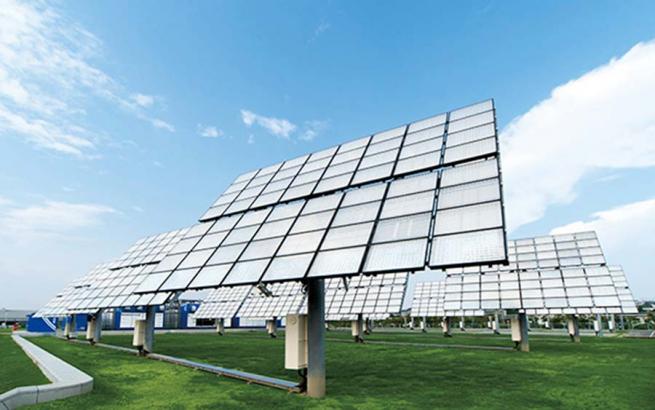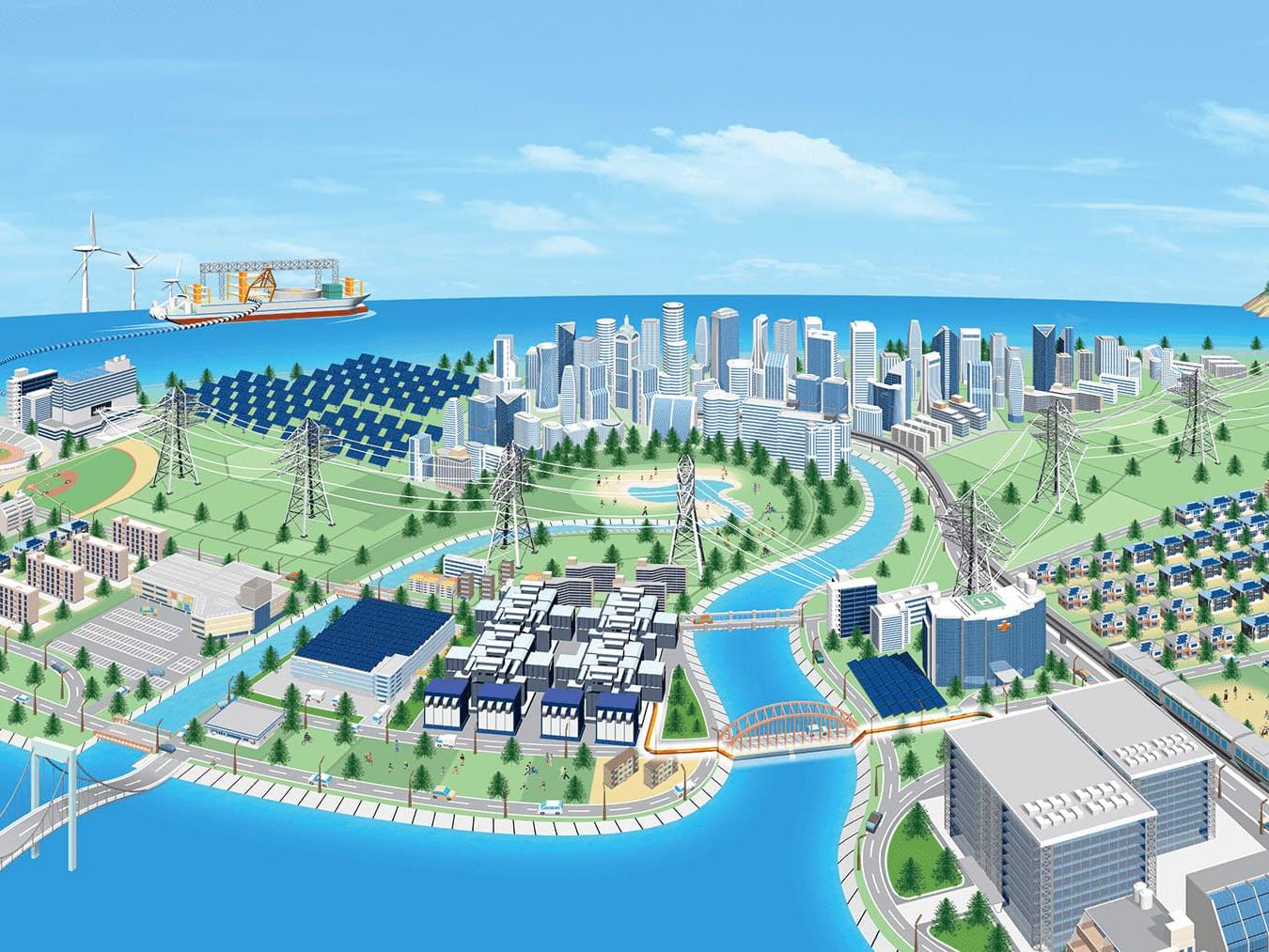
Standing at the forefront of a new form of energy
What is renewable energy, and how is it affecting our lives?
As the world continues to face environmentally related threats such as global warming and climate change, there is a great deal of attention on the shift from fossil fuels to renewable energy. According to the Paris Agreement that was adopted in 2015, the use of coal, oil and natural gas that generate greenhouse gases that cause global warming has been suppressed because countries around the world have decided to aim for a clean global environment.
As global warming progresses, there is a risk of increased extreme weather, reduced available water, and the world’s food production is at stake. However, the amount of power generation depends on the weather and the size of the land, and it costs more to generate electricity than other resources, which hampers the spread of renewable energy. The percentage of renewable energy that makes up the total primary energy in the world derived from renewable technology has remained at approximately 11% as of 2019*¹.If greenhouse gases can be reduced by increasing the percentage of renewable energy, it is possible to reduce the risk of global warming. In order to further expand the use of renewable energy, technologies that can supply stable electricity that can use renewable energy at any time is required. Therefore, various companies such as Sumitomo Electric are paving the way to promote the spread of stable renewable energy sources.
*1 Source: Our World in Data based on BP Statistical Review World Energy(2020)
Types of renewable energy and global trends.
Renewable energy comes in various forms including solar, wind, hydro/water, geothermal and biomass. The leading countries for installed renewable energy in 2019 were China, the United States and Brazil. China led renewable energy installations with a capacity of around 758.6 gigawatts, followed by the United States, which had a capacity of around 264.5 gigawatts*². Globally, China and Brazil are the leading countries in terms of energy generation through hydropower*³. Geothermal energy has been on an upward trend as well. Data also shows a global increase in geothermal energy capacity in the last ten years*⁴. Similarly, there has been a significant increase in the capacity of global solar energy in recent years. Around the world, Efforts such as the Green New Deal, a resolution introduced in the United States that lays out a grand plan for tackling climate change, have shown increased momentum as a means to reduce greenhouse gas emissions.
*2 Source : Statista『Renewable energy capacity - country ranking 2019』
*3 Source : Statista『Largest hydropower producing countries 2019』
*4 Source : Statista『Largest Worldwide capacity of geothermal energy 2009-2019』
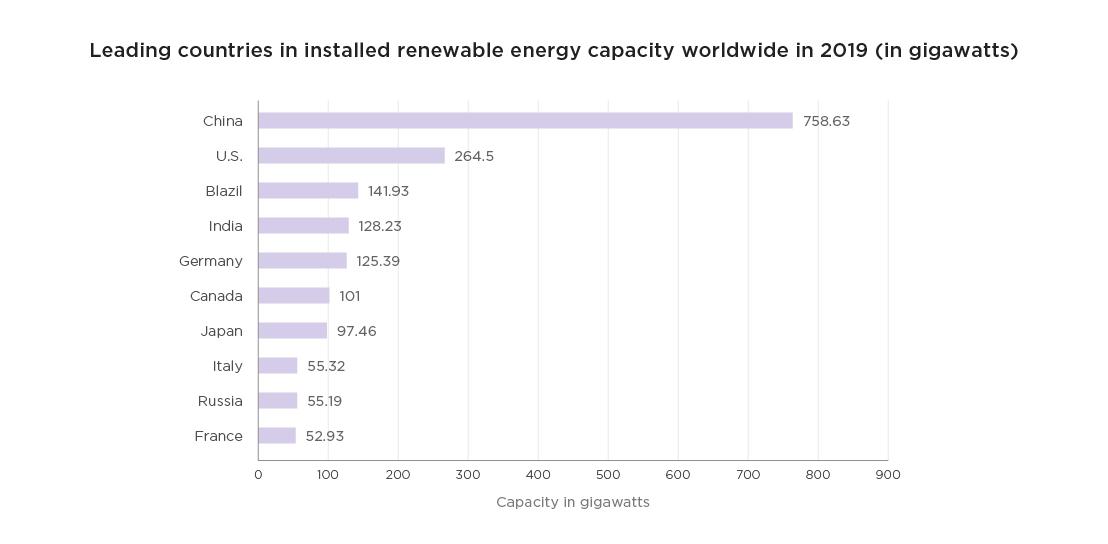
Advantages and challenges of introducing renewable energy.
In this way, the current situation is that there are differences in the introduction trends and rate of progress of renewable energy depending on the country, and renewable energy is worth continuing to focus on. Renewable energy generation emits little to no carbon dioxide and greenhouse gases into the atmosphere, so it can be expected to have a great contribution to the realization of a carbon-free society. In addition, it is possible to use it as an emergency energy source in the event of a natural disaster or earthquake. Solar power and wind are used to generate energy, so there is no problem of fossil fuel depletion. For the reasons mentioned above, it can appeal to investor initiatives.
While renewable energy offers many advantages and environmental benefits, it also has its drawbacks. Compared to fossil fuels, it can be difficult to supply stable energy depending on variable factors such as the weather. Also, because the power generation efficiency is low compared to fossil fuels, a large amount of site areas are required, and the cost tends to be high.
Challenges and solutions of renewable energy and Sumitomo Electric’s renewable energy-related products
With solar energy power generation, which has seen a significant increase among renewable energy in recent years, issues remain in the power generation efficiency and cost effectiveness. General silicon solar panels offer a low rate (around 20%) of conversion of solar energy into electrical energy. To increase the conversion efficiency, concentrator photovoltaic (CPV) systems can be used. A concentrator photovoltaic (CPV) system is a solar power generation system with a modular structure consisting of lenses directly collecting sunlight and power generation cells converting the collected light into energy. By concentrating the sunlight on a chip of a few millimeters, a conversion efficiency of over 40% can be achieved. Theoretically, this can be increased up to 80%, and it is a technology that is highly anticipated in the future. Sumitomo Electric’s CPV system is currently still in the development stage, but in addition to being more efficient and generating more power than solar cells, it is also compact and lightweight. When constructing a CPV system, the installation of the solar panels is done by hand, and this can be conducted smoothly while reducing burden and risks of accidents. We are currently implementing demonstration experiments of the CPV systems in Australia and Morocco, and will continue to aim to commercialize the CPV system while increasing power generation efficiency and cost-effectiveness.
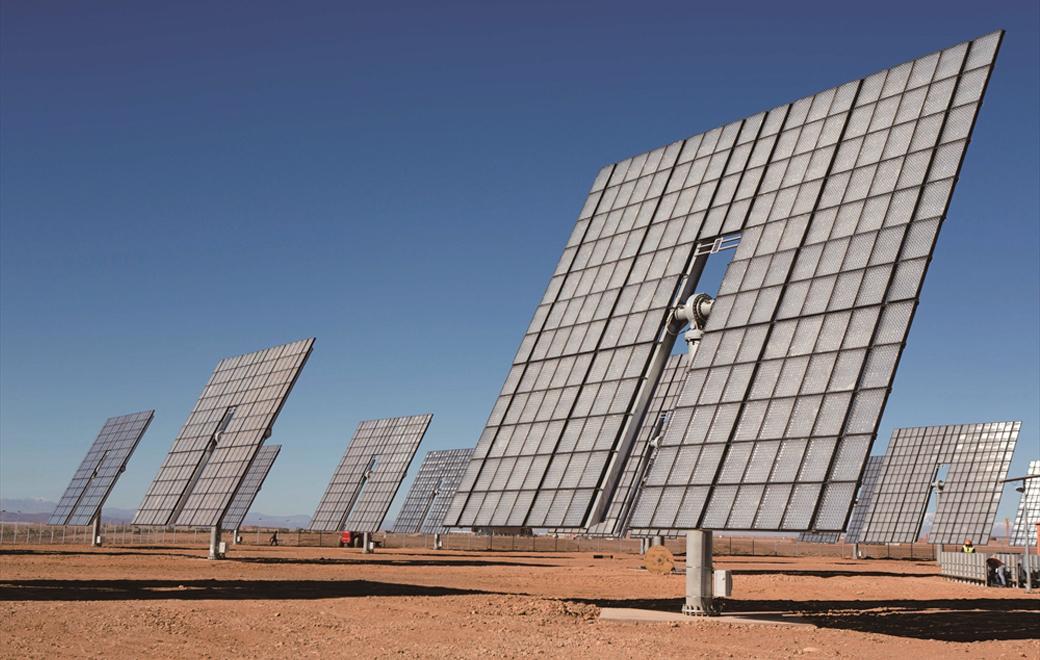
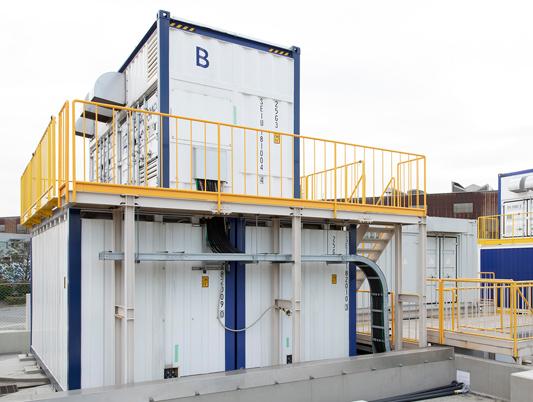
With the various types of renewable energy, the major themes are improving power generation efficiency, stable supply and cost reduction.
The key to solve these issues lies on a combination of “stable power generation” and “energy storage”. One of the solutions that is currently drawing attention is the development of a storage battery that can store generated power.
When the amount of power generation exceeds the electric power demands, the excessive power can be stored by an energy storage for balancing between supply and demand. The number of large capacity battery close to power plants has been increasing for the balance adjustment. As the renewable power generation becomes larger, even larger size battery storage will be installed.
To meet such requirements, Sumitomo Electric has also commercialized a large-scale redox flow battery. Redox flow batteries are charged and discharged by the oxidation-reduction reaction of Vanadium ions. One of the main features of the redox flow battery is its long product lifetime with almost no degradation of electrolytes. For example, with lithium batteries commonly used for mobile phones, the battery performance will gradually deteriorate and the product lifetime will be shortened after repeated charge/discharge cycles. The redox flow batteries have a system design life of 20 years, with an unlimited number of charge-discharge cycles available with almost no degradation of electrolytes.
Another advantage of a redox flow battery is its safety. It is composed of non-combustible or flame-retardant materials, so the possibility of a fire with the batteries is extremely low.
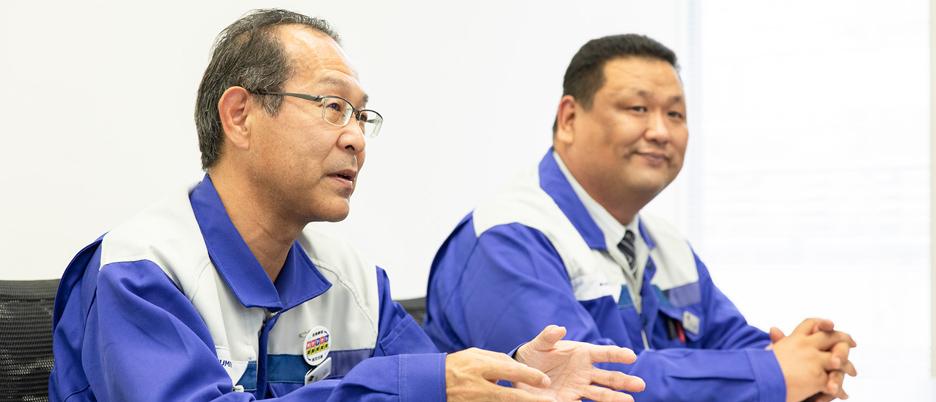
Through the global shift towards sustainable development, it is up to individuals and corporations to seek new solutions and do their part in preserving the environment. Renewable energy is becoming more abundant and cheaper as technologies evolve, and companies such as Sumitomo Electric continue to stand at the forefront of these innovations. Although there are still many challenges to face and hurdles to cross, they will continue to focus on providing stable power supply through environmentally friendly renewable energy and undoubtedly shape the future that we live in.
